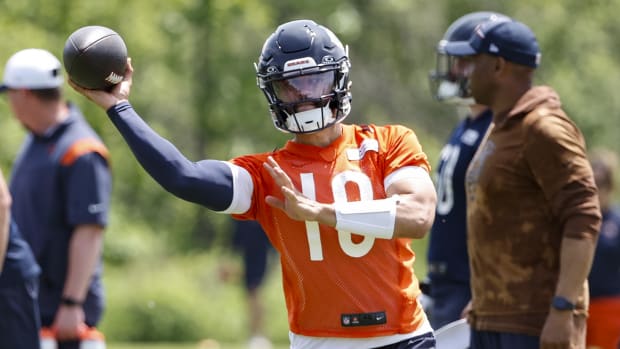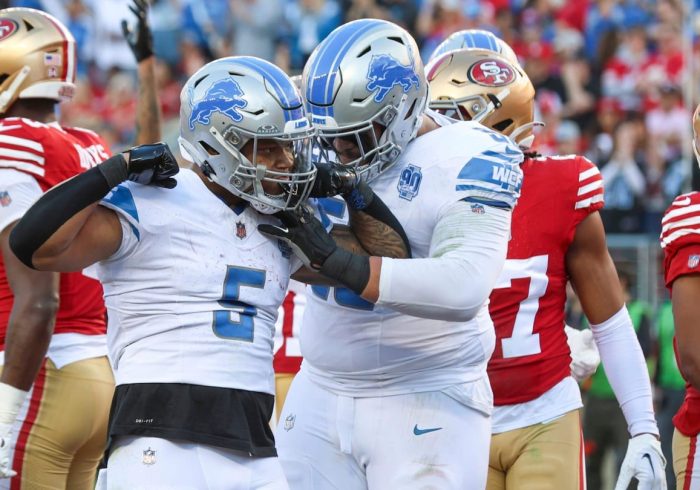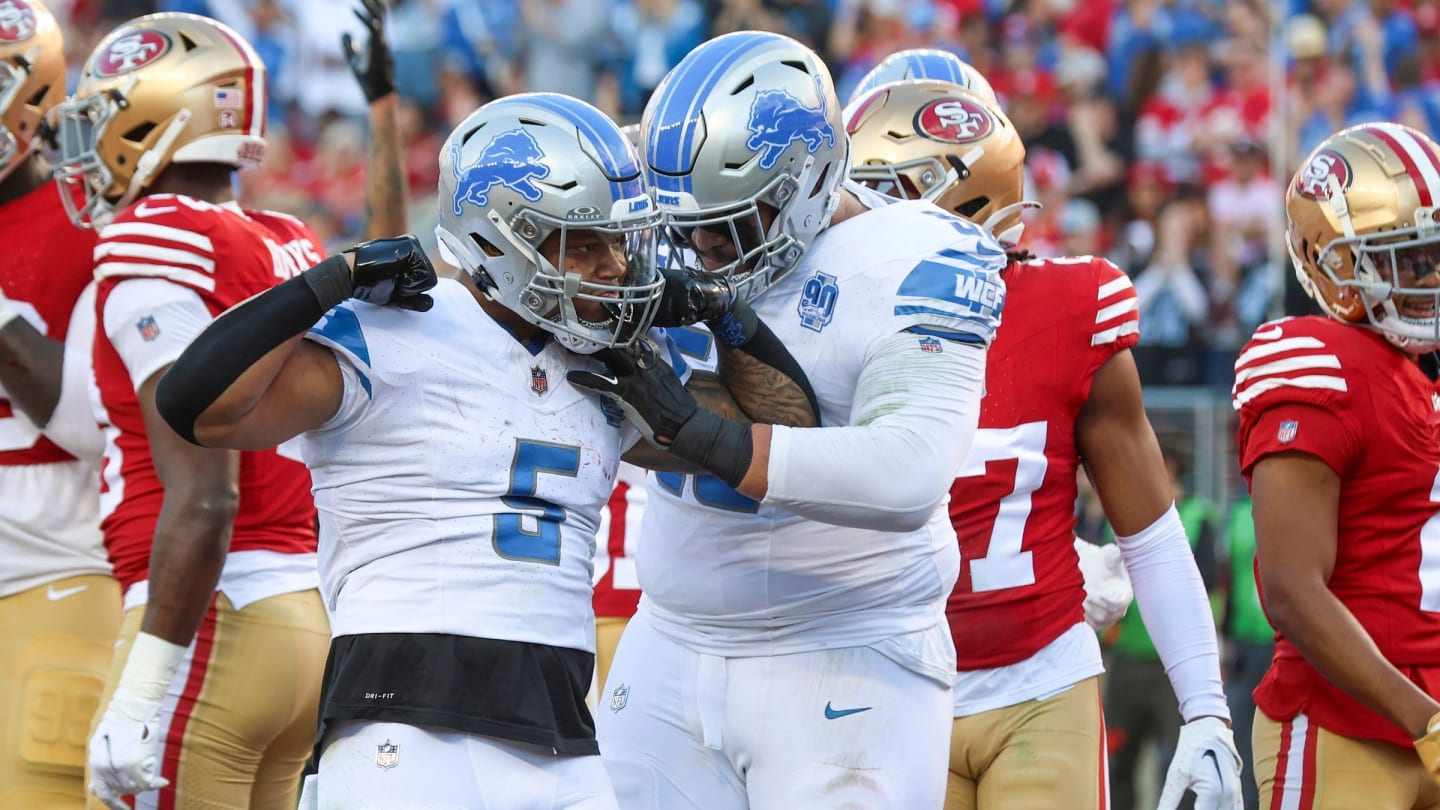Welcome to the NFL offseason, where receivers get paid lots of money (just ask Justin Jefferson, A.J. Brown, DeVonta Smith, Amon-Ra St. Brown, Jaylen Waddle and Nico Collins), the NFL continues to push for an 18-game season, the league and NFLPA discuss ways to ruin the offseason calendar and teams continue to go through their OTAs and mandatory minicamps.
So we asked our MMQB staff of NFL experts to answer a series of eight questions over the next two weeks. They debated the worst move Wednesday, so today they’re going to weigh in on the most improved teams.
Let’s get to their answers as we get closer to the NFL taking a break before July training camps.
Matt Verderame: Chicago Bears
If you believe Caleb Williams is going to be a star either immediately or in the near future, Chicago is the choice.
The Bears not only added Williams at the sport’s paramount position, but they also traded for veteran receiver Keenan Allen before nabbing wideout Rome Odunze with the No. 9 pick, giving them a duo of talented pass catchers to go with DJ Moore.
With a defense boasting talent at all three levels including edge rusher Montez Sweat, linebackers Tremaine Edmunds and T.J. Edwards, corner Jaylon Johnson and safety Jaquan Brisker, the Bears have talent in a way they haven’t since the days of Brian Urlacher and Matt Forte.
Should Williams realize his potential, Chicago could challenge for a playoff spot and potentially more in the NFC.
Gilberto Manzano: Washington Commanders
There’s usually one team that goes from last to first most NFL seasons. I’m not saying the Commanders will win the NFC East, but I’m giving them the best odds after finishing 4–13 last season.
Washington has drastically improved in various areas and not just with the roster. There’s optimism in the nation’s capital because Josh Harris replaced Dan Snyder as team owner. And new GM Adam Peters and coach Dan Quinn had a strong first offseason in Washington.
Quinn could quickly build a formidable defense with the many savvy moves Peters made, including the signings of Dorance Armstrong, Frankie Luvu, Bobby Wagner, Jeremy Chinn and many other defenders. And it helps that Quinn already has head coaching experience from his time with the Atlanta Falcons.
Most importantly, they might have a franchise quarterback with Jayden Daniels, the No. 2 pick in the draft. Expect the Commanders to be a lot better in 2024.
Conor Orr: New York Giants
I would say the Bears but Matt already jumped on the answer and did a fine job of articulating why. I’ll throw the Giants into the ring for two reasons: Brian Burns changes the calculus of this defense, and I like the combination of Brian Daboll and Drew Lock and am very curious to see if it ends up bearing some Geno Smith-ian fruit for the Giants. While I wasn’t sold on Malik Nabers as the best available wide receiver at that point, I think this team can win between eight to 10 games this year despite not having what one would consider a transformative offseason. The Giants are still low on weapons, but their offensive line will develop (read: has to develop) and this defense is seriously formidable, though I would have liked to have seen a repair in the Wink Martindale–Brian Daboll relationship to the point where Martindale would have gotten to use Burns.
Albert Breer: Arizona Cardinals
I like the Giants and Bears, too, but Arizona has quietly continued to do very logical things to improve its roster, and set up a sustainable future. Moving Paris Johnson Jr. to left tackle, and signing Jonah Williams at a very reasonable price to replace him on the right side made the Cardinals younger, and better at the position. Marvin Harrison Jr. could quickly be among the NFL’s best skill players, and, thus, change the math for the rest of Arizona’s skill group. Top-100 picks Darius Robinson and Max Melton are tough, competitive, program fits at premium positions for the defense.
And, then, there’s Kyler Murray, who really seems to have turned a corner from a leadership standpoint since tearing his ACL two years ago. He’s been in the building and around the team more, while cementing himself as the triggerman for GM Monti Ossenfort and coach Jonathan Gannon’s build.
Now, I’m not saying the Cardinals are going to the playoffs. But I wouldn’t be stunned if they got to .500 or better, which would be a nice Year 2 jump for the group they have in charge.






